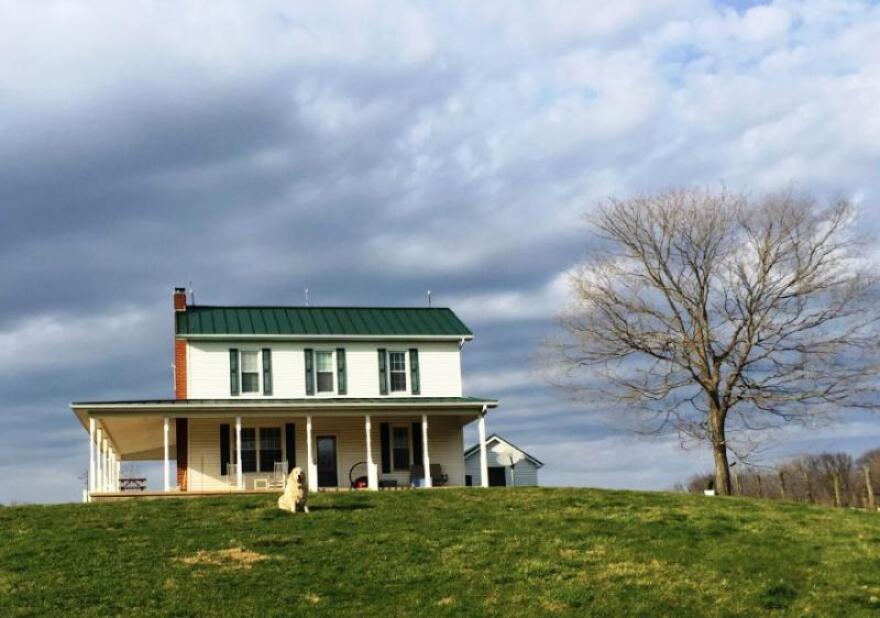Ohio’s first industry, farming, is still its biggest industry. But with technology-driven lifestyles, urbanization and a global economy, will that continue for the next generation that is now looking to make its way in the world?
There's reason to believe so.
Paul and Heather Dorrance have a newly redone, very old farmhouse on 111 acres, north of Chillicothe. These millennials bought the place four years ago.
Paul was an Air Force pilot and Heather a teacher. He says after a lot of research, they decided family farming is right for the life they want for themselves and their three small children.
"I had to take the jump, and just start doing it out here," Dorrance says. "And we’re still learning stuff every day.”
Family farming like this started near here nine generations ago. The land up the hill from the Dorrances' was cleared by a veteran of the Continental Army.
Back then, he and his neighbors were the new generation with a vision.

Thinking Small
Now, millennials have a vision of their own.
Lisa Helm heads Urban Green, an alternative farming group in Dayton. Speaking at this year’s Ohio Sustainable Food & Farm conference, she says young farmers starting out today are looking at financial and sustainability issues and at scale, where traditional large-field produce farms may not be the way to go.
“A lot of the problem with agriculture is people can’t make a living doing it, especially conventionally," Helm said. "I mean, if you’re looking at corn and soybeans, you’re looking at $500 an acre. That’s it."
Helm says the answer can lie in micro-farming techniques like small plot intense, or "SPIN," farming. Often used in urban areas, SPIN farming requires tightly focused planting, feeding and watering to get big-field yields from garden size spaces.
“Our training farm is right in the middle of a residential area," Helm says. "It's two lots. We grow in unheated high tunnels over the winter. Grow year round - and you bump your profits up quite a bit."
Small plots can be profitable, she says.
"So on less than a quarter of an acre, we expect to sell $20,000 to $30,000 worth of vegetables," Helm says.

A Different Scale
In Chillicothe, Dorrance says scale is part of his pasture-based animal agriculture as well.
His cattle, hogs and chickens move in a specific order among a set of pastures. The feeding habits of one group naturally prepare the field for the next. The animals are better nourished and healthier, and the land use is smaller.
He says this provides the sustainability and efficiency so the farm can be a profitable two-person operation.
“There’s a customer coming from Columbus to pick up some pork from us," Dorrance says. "Folks are seeking out this kind of a product. And they’re willing to drive an hour to come get it, see the farm and make an afternoon of sourcing their food locally. It’s wonderful.”
Dorrance argues it's not just the quality of the food that attracts customers.
"There are lots of reasons for people to love this type of agriculture," Dorrance says. "There’s an animal welfare aspect of it—absolutely. You know, you look at these chickens: free-range as it gets.”
The Dorrances sell in scale as well, at farmer’s market and directly to restaurants within an hour’s drive.
Paul says his farm is already profitable. He hopes that will convince other young people to try farming.
Todd Shriver of the Ohio Young Farmers Coalition says another issue specific to young people must be addressed: debt.
“I don’t think getting young people interested in farming is a problem," Shriver says. "It’s an inherently attractive profession. But there are a lot of financial barriers. And then, if you’re carrying a lot of student debt, it’s almost impossible to start your own farm. So we’re advocating for a student debt-relief program.”
One idea Shriver himself is pushing is a change in business tax law so that student debt can be a business expense for farmers and depreciated—like the cost of a tractor.

Finding Fulfillment
Kate Hodges of the coalition, and a young farmer herself, says the business side does matter. But there is increasing interest in farming among millennials for another reason, too.
“The American dream that people kind of always would strive for is not necessarily going to hold true for my generation," Hodges says. "So they want to get involved with their hands, creating things, because they’re seeking something that’s fulfilling.”
The National Young Farmers Coalition says its membership has steadily increased since 2010.
The 2012 agriculture census showed an increase in farmers under 30 for the first time in a century, and they expect the next census to show that trend continue.





